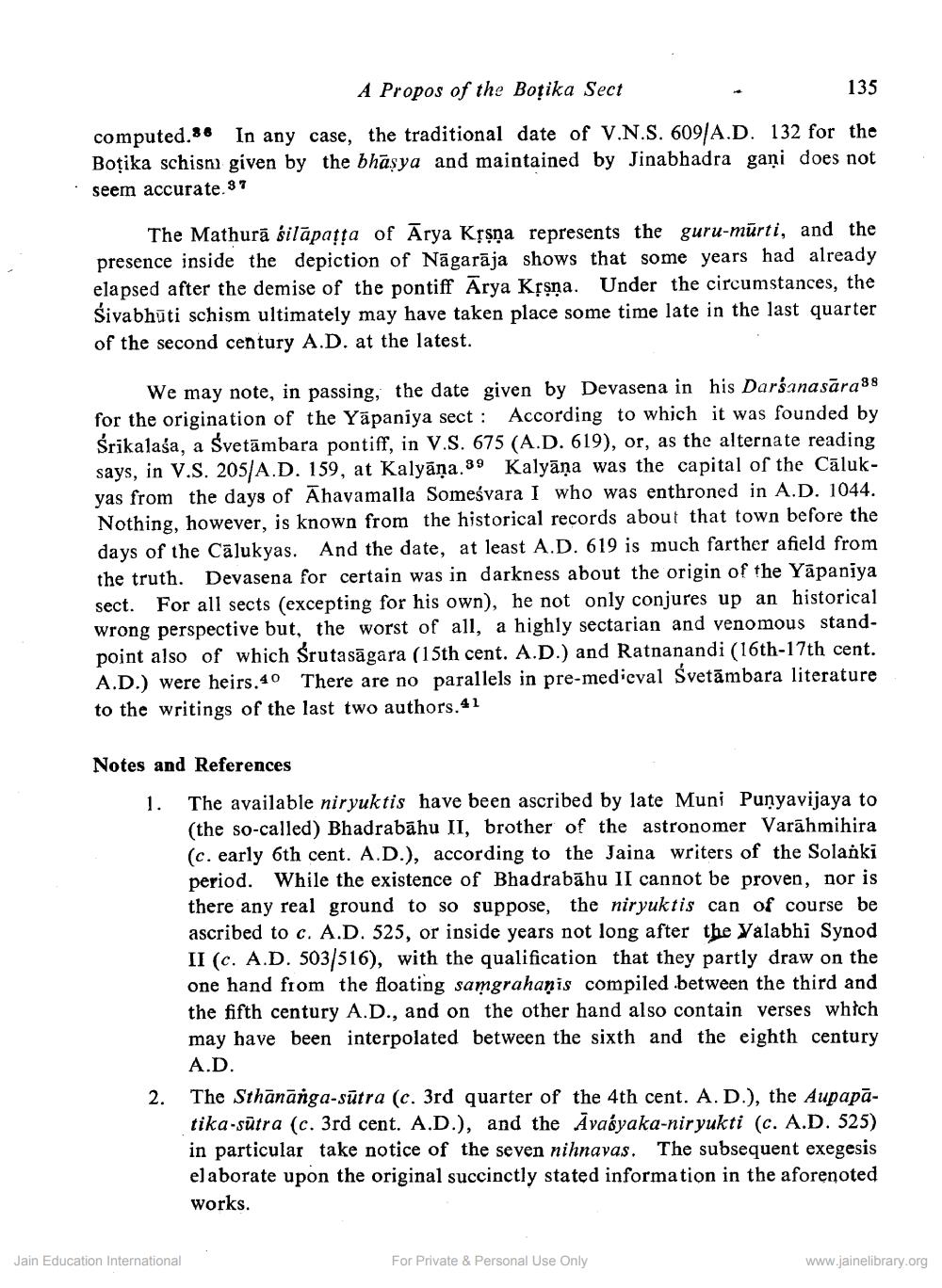Book Title: Propos of the Botika Sect Author(s): M A Dhaky, Sagarmal Jain Publisher: Z_Aspect_of_Jainology_Part_3_Pundit_Dalsukh_Malvaniya_012017.pdf View full book textPage 5
________________ A Propos of the Boţika Sect 135 computed.36 In any case, the traditional date of V.N.S. 609/A.D. 132 for the Boţika schisni given by the bhāşya and maintained by Jinabhadra gani does not seem accurate. 87 The Mathurā šilāpațţa of Arya Kțsņa represents the guru-mūrti, and the presence inside the depiction of Nāgarāja shows that some years had already elapsed after the demise of the pontiff Ārya Krsna. Under the circumstances, the Sivabhūti schism ultimately may have taken place some time late in the last quarter of the second century A.D. at the latest. We may note, in passing, the date given by Devasena in his Darśanasāra88 for the origination of the Yāpaniya sect: According to which it was founded by Śrikalaša, a Svetāmbara pontiff, in V.S. 675 (A.D. 619), or, as the alternate reading says, in V.S. 205/A.D. 159, at Kalyāņa.39 Kalyāna was the capital of the Cālukyas from the days of Āhavamalla Someśvara I who was enthroned in A.D. 1044. Nothing, however, is known from the historical records about that town before the days of the Cälukyas. And the date, at least A.D. 619 is much farther afield from the truth. Devasena for certain was in darkness about the origin of the Yāpaniya sect. For all sects (excepting for his own), he not only conjures up an historical wrong perspective but, the worst of all, a highly sectarian and venomous standpoint also of which Śrutasāgara (15th cent. A.D.) and Ratnanandi (16th-17th cent. A.D.) were heirs. 40 There are no parallels in pre-medieval Švetāmbara literature to the writings of the last two authors. 41 Notes and References 1. The available niryuktis have been ascribed by late Muni Punyavijaya to (the so-called) Bhadrabāhu II, brother of the astronomer Varāhmihira (c. early 6th cent. A.D.), according to the Jaina writers of the Solanki period. While the existence of Bhadrabāhu II cannot be proven, nor is there any real ground to so suppose, the niryuktis can of course be ascribed to c. A.D. 525, or inside years not long after the Valabhi Synod II (c. A.D. 503/516), with the qualification that they partly draw on the one hand from the floating samgrahaņis compiled between the third and the fifth century A.D., and on the other hand also contain verses which may have been interpolated between the sixth and the eighth century A.D. The Sthānānga-sūtra (c. 3rd quarter of the 4th cent. A.D.), the Aupapātika-sūtra (c. 3rd cent. A.D.), and the Avašyaka-nir yukti (c. A.D. 525) in particular take notice of the seven nihnavas. The subsequent exegesis elaborate upon the original succinctly stated information in the aforenoted works. Jain Education International For Private & Personal Use Only www.jainelibrary.orgPage Navigation
1 ... 3 4 5 6 7 8 9
